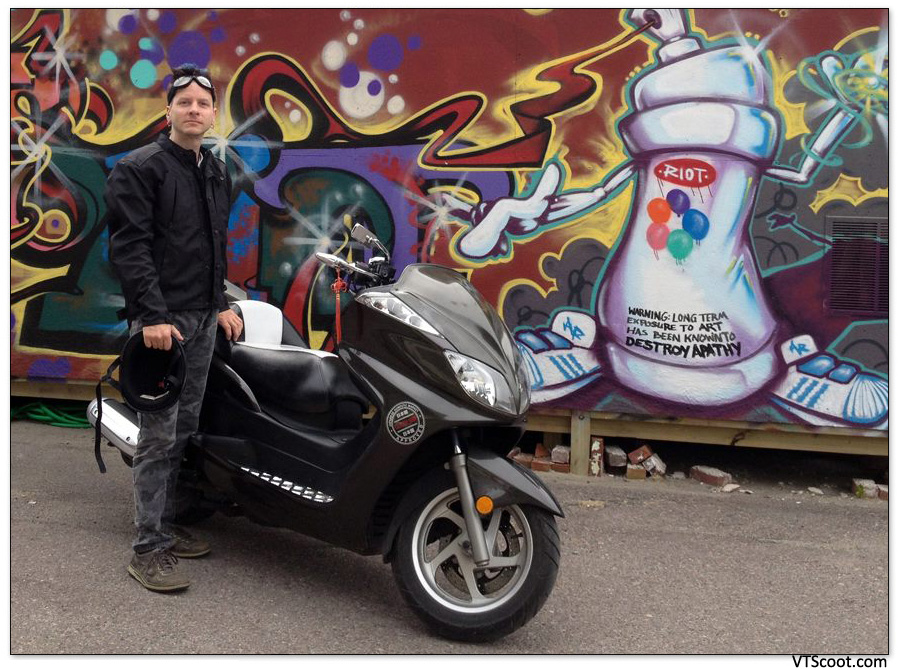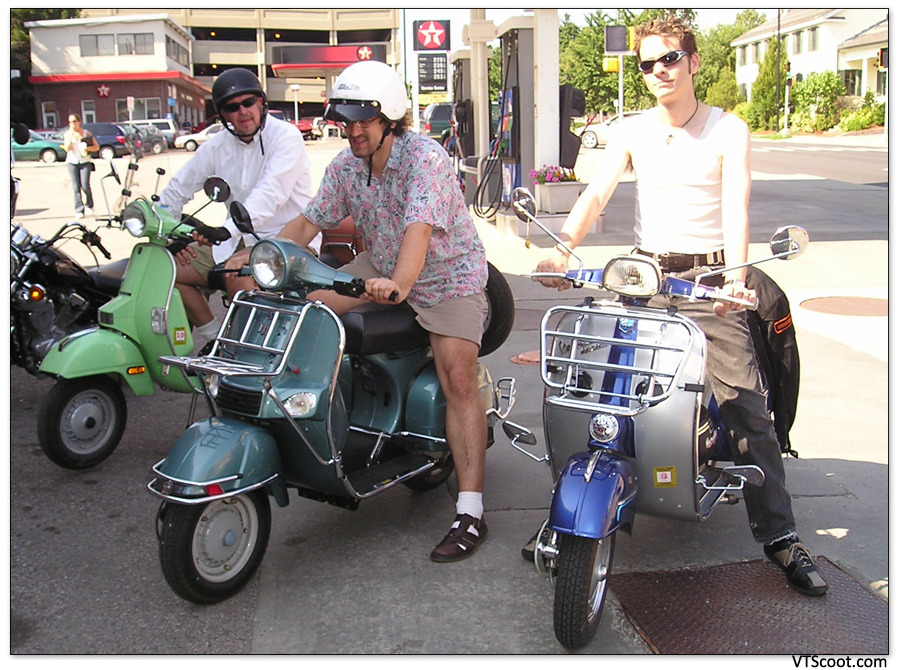What Are Scooters?

This week I sold my trusty scooter of 12 years. I’m planning a long-distance move in the near future and it makes more sense for me to sell this bike in the spring and to purchase a new one in my new location. This will be my first summer without a bike in more than 20 years, and I’m sure I’m going to hate it, but it’s still going to be fun breaking in a completely new bike on completely new roads next summer. More on that later, for now I’m going to tackle a question I get a lot. What is a scooter? Is it a motorcycle? Is it a moped? What makes it a scooter?
The answer is that it is neither a motorcycle, nor a moped, but in some senses it can be both. Let me explain, the DMV has two classifications for motorized two-wheel transportation when registering the vehicle: Mopeds, which they consider any vehicle with less than 50cc of engine displacement, and Motorcycles, which are everything else. It’s a broad brush for sure, many things are classified Moped that aren’t truly mopeds, and some things are classified Motorcycles that absolutely aren’t motorcycles. I’m lookin’ at YOU, Polaris Slingshot!

Scooters are their own thing. Some can be under 50cc and some can be more than 650cc. What they all have in common is that you can step through them, rather than throwing your leg up and over the saddle as you would on a motorcycle OR a moped… or in the case of a Slingshot where you open the driver’s side door and climb into the bucket seat (again, not a motorcycle – so GTFO of my motorcycles-only parking space you over-priced mid-life-crisismobile!). The machinery and fuel aren’t attached to the frame between your legs, such as with a motorcycle, but directly underneath and in back of the rider position, and the rider would place their feet on floorboards in front of them, rather than on foot pegs to the sides. This general shape of vehicle is what defines the bike as a scooter, for the most part.
The first motor scooter dates back to 1916, the Autoped designed by Gibson and Merkel, which looked like a push-scooter with a motor. The first in the style we think of as a scooter was the Unibus built by the Gloucester Aircraft Company, with metal legshield and bodywork to protect the rider and the motor from road debris. Later models, like the Cushman in 1936, or the Fuji Rabbit and Italian Vespa and Lambretta in the 1940s brought scooters to global popularity. They were great for common citizens who needed a bike to get them around economically, but didn’t want to get their clothes dirty and wanted to be able to change their own tires.
Scooters are usually cheaper to buy and insure, easier to operate, and tend to have low-displacement engines. In the mid-1980s MaxiScooters hit the market, similar to their predecessors but with more powerful engines, blurring the line between scooter and motorcycle. However another 1980’s innovation, that of automatic transmission in a scooter, gave a new distinction between scooter and motorcycle, as the vast majority of motorcycles operate in standard transmission.
I’ve had multiple motorcycles and multiple scooters over the years and I can’t really say that I prefer one over the other. Ideally I’d love to have one of each. Motorcycles tend to be faster and have more weight to them, so I’d not be blown around as much on the windy, open highway. However, with their smaller, more nimble wheels, lighter weight and automatic transmission there is just nothing better to maneuver through city traffic than a scooter.
